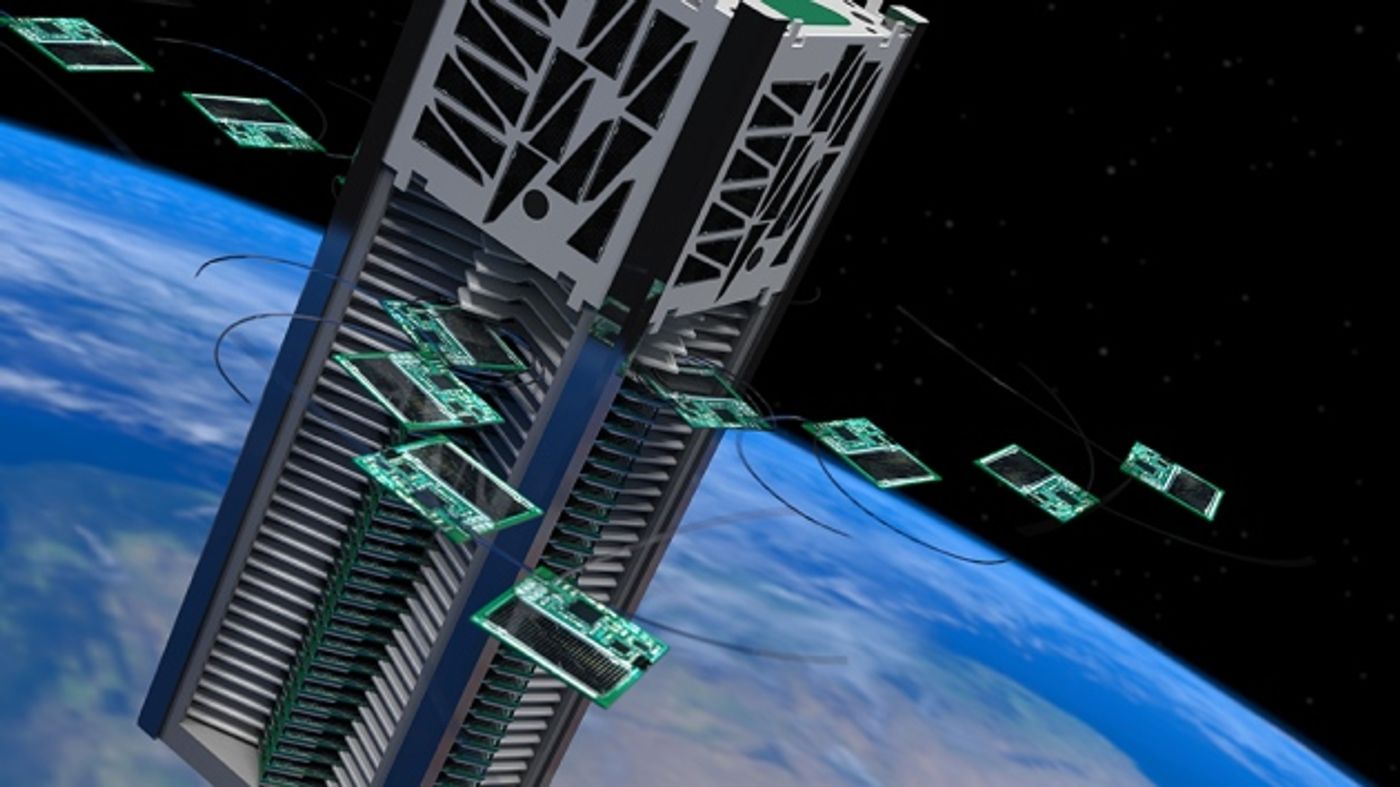Scientists Prepare to Launch KickSat 2, a New Chipsat System, Into Space
Scientists are getting excited to test out a new chipsat platform in space dubbed KickSat 2. It is the second attempt to launch a barrage of chipsat sprites into space after the original attempt in 2014 didn’t work due to malfunction.

Image Credit: Ben Bishop/Nature
After missing a deadline to send a payload up to the International Space Station on July 6th because of delays in getting an FCC license, the initiative will now take place on the following launch to the International Space Station because the licensing process has been completed a little later than scheduled.
“We’re extremely excited,” says aerospace engineer Brett Streetman. “This will give flight heritage to the chipsat platform and prove to people that they’re a real thing with real potential.”
The payload will eject approximately 104 smaller chipsat sprites into space, which are basically little sticky note-sized 5-gram computer chips that are only 3.2 centimeters long and have a 60-miliamp solar power panel integrated into them, as well as a radio and an antenna, which allow them to transmit information.
The solar-powered chips will be responsible for collecting information about their orientation, as well as their energy levels before they eventually get dragged into Earth’s atmosphere by gravity and then burn up as they fall back.
This launch is little more than just a test, but such chipsat technology could provide a valuable platform for space exploration in the future. The payload, which is about the size of a shoebox, is lightweight and capable of being launched into space much more inexpensively than modern satellites.
Because the chipsats are inexpensive to produce, scientists don’t have to worry about launching tons and tons of these things into space. It also doesn’t matter if a number of the chipsats fail prematurely, because the idea behind launching 104 chipsats at once is to use the ‘power in numbers’ logic to have as many survivors as possible to collect data.
“You don’t want to make an exquisite satellite. You just launch a million; if only 1% survive then that’s fine. You put statistics on your side,” said Mason Peck, an engineer working closely with the chipsat project.
These small logic board-based miniature satellites are able to be controlled by using a technique called sailing, which means they can tilt towards or away from the Sun to change their orientation. It does this with some magnetic coil trickery that can align with the Earth’s own magnetic field like a compass.
The chipsat idea may act as a pioneering demonstration of the power and capability of this kind of space exploration technology. Recently, physicist Stephen Hawking and millionaire Yuri Milner revealed their interest in launching solar sail-based nano-crafts in space that could be propelled to other systems, such as Alpha Centauri, with the power of lasers.
Before we get there, however, chipsats will most likely be tested nearby in our own solar system. Scientists believe they could be useful in gathering data about distant planets like Jupiter or Saturn, and studying Jupiter’s moons or Saturn’s rings.
Other ideas for the technology include having a real-time monitoring system of the Earth’s magnetic field, which hundreds or thousands of these little chipsats would be great for.
It should be very interesting to see how the next launch attempt goes and to see how the chipsat idea will fare against the modern satellite technique in space.
Source: Nature








